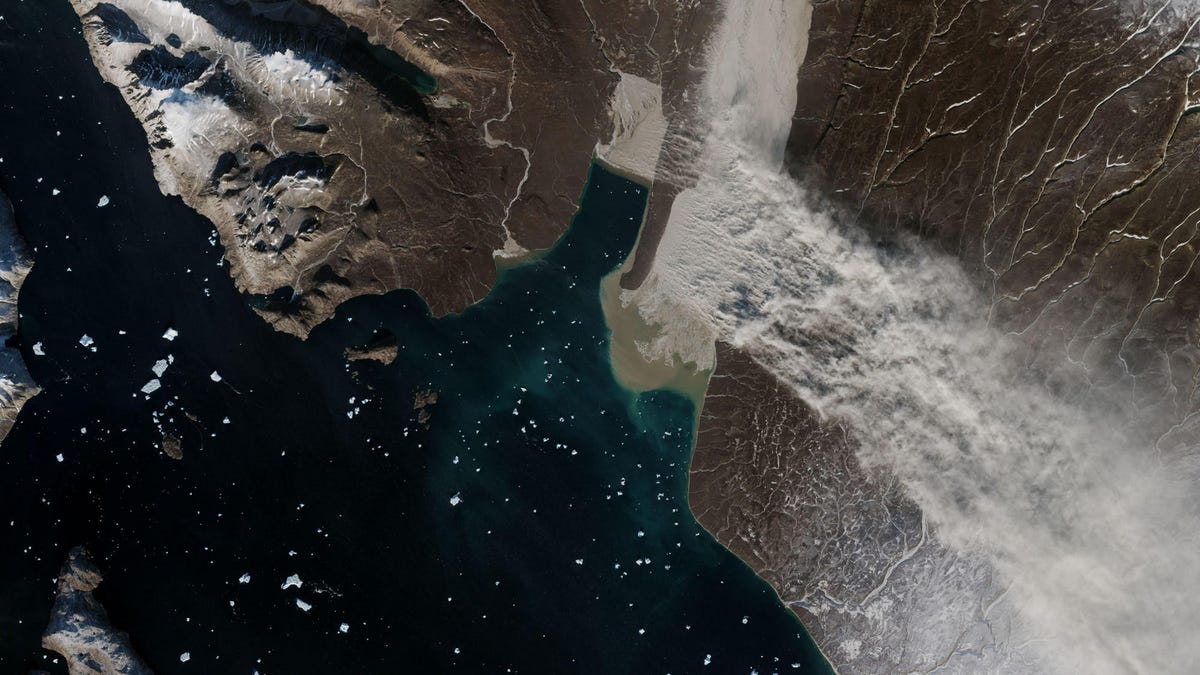NASA sees rare 'glacial flour' dust streaming over Greenland
You won't find glacial flour at a bakery.
Glacial flour may sound like some new-fangled health food, but you wouldn't want to make bread out of it.
Last month, NASA's Terra satellite and the European Space Agency's Sentinel-2 mission captured images of glacial flour streaming over the landscape in Greenland. NASA describes the rare phenomenon as "fine-grained silt formed by glaciers grinding and pulverizing rock."
Definitely not for baking.
The view, captured on Sept. 29, gives scientists a good look at what happens when wind pushes a silt plume out of a stream valley. NASA released a series of images showing the stream's floodplain drying out and turning gray over a matter of days. The scene is calm a day later.
This series of images shows the stream's floodplain drying out.
"This is by far the biggest event detected and reported by satellites that I know about," said Santiago Gassó, an atmospheric scientist at NASA's Goddard Space Flight Center.
Gassó says high-latitude dust events like this one can impact air quality. A 2016 study suggests the dust can add nutrients to the marine environment.
NASA suspects the glacial flour came from glaciers located upstream from the floodplain. These space observations could give scientists a better understanding of how glacial flour and dust plumes interact with the atmosphere, and could one day contribute to updated climate models.
For the more casual observer, the dramatic image gives us a glimpse of how dust storms work in a place we normally associate with ice, snow and cold.


